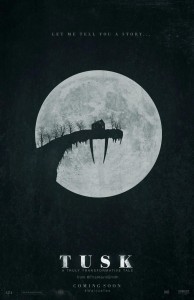Big Hero 6
Posted on November 6, 2014 at 5:59 pm
B+| Lowest Recommended Age: | Kindergarten - 3rd Grade |
| MPAA Rating: | Rated PG for action and peril, some rude humor, and thematic elements |
| Profanity: | None |
| Alcohol/ Drugs: | None |
| Violence/ Scariness: | Cartoon-style peril and violence, sad death, grieving parent becomes destructive |
| Diversity Issues: | Diverse characters |
| Date Released to Theaters: | November 7, 2014 |
| Date Released to DVD: | February 23, 2015 |
| Amazon.com ASIN: | B00O4ZC57 |

Hiro (Ryan Potter) is a super-smart kid who likes to hustle underground robot fighters with his deceptively cute-looking little bot. He has no interest in going to school until the older brother he adores (Daniel Henney as Tadashi) brings him to the robot lab at the university he attends. When Hiro sees all of the lovable nerds (and one non-nerdy slacker named Fred who dresses as the school mascot) making awesomely cool creations, he gets very excited about joining them. He has to invent something spectacular to get admitted, and so he gets to work and comes up with something extraordinary, a system of tiny bots who can form themselves into almost anything.
But then Tadeshi is killed trying to rescue his professor from a fire. Hiro is devastated. The brothers were orphans. While their aunt (Maya Rudolph) does her best, Hiro and Tadeshi were all that was left of their family, and now Hiro is devastated at being alone. He refuses to go anywhere or talk to anyone.
But Tadeshi left someone behind. It turns out he was working on developing a robot called Baymax, designed to be a kind, reassuring, gentle healer. Baymax is equipped with extensive diagnostic and treatment capacity but his look is intended to be non-threatening. He looks like a big, white balloon, or, as one character says, like a marshmallow man. He is as far from a weapon or fighter as it is possible to be. But when Hiro and the robotics nerds find out that Hiro’s invention has been stolen and will be used for destructive purposes, they get together to use their skills, their courage, and, most of all, their sense of what is right to save the day.
The film, loosely inspired by Marvel’s comic book, is filled with engaging characters and imaginative touches. The setting is “San Fransokyo,” a California/Japan mash-up that seems familiar and real but also intriguingly foreign. It is a pleasure to see Disney’s most diverse set of protagonists ever, race, gender, and even economic. The bending of stereotypes is done with an effortless flair. And it is great to see a movie for the family that acknowledges the fun and excitement of being smart and working hard. We get a lot of movies for kids about the importance of friends and family, following your dreams, and being yourself, and all of that is here, too. But we don’t get many about solving problems through study and experimentation. It’s very nice to see a film that recognizes that it is cool to be smart.
NOTE: Please stay all the way through the credits for an extra scene that is a lot of fun, especially if you are a Marvel fan. And be sure to get there on time as the Oscar-nominated pre-feature short film “Feast,” about a hungry puppy, is completely charming, hilarious, and sweet.
Parents should know that this film includes cartoon-style action, peril, and violence, very sad sibling death (off-camera), other characters apparently killed, grieving parent who becomes destructive, and brief potty humor.
Family discussion: What kind of robot would you like to build? Which of the characters is most like you?
If you like this, try: “The Iron Giant,” “Wreck-It Ralph,” and “Bolt”




